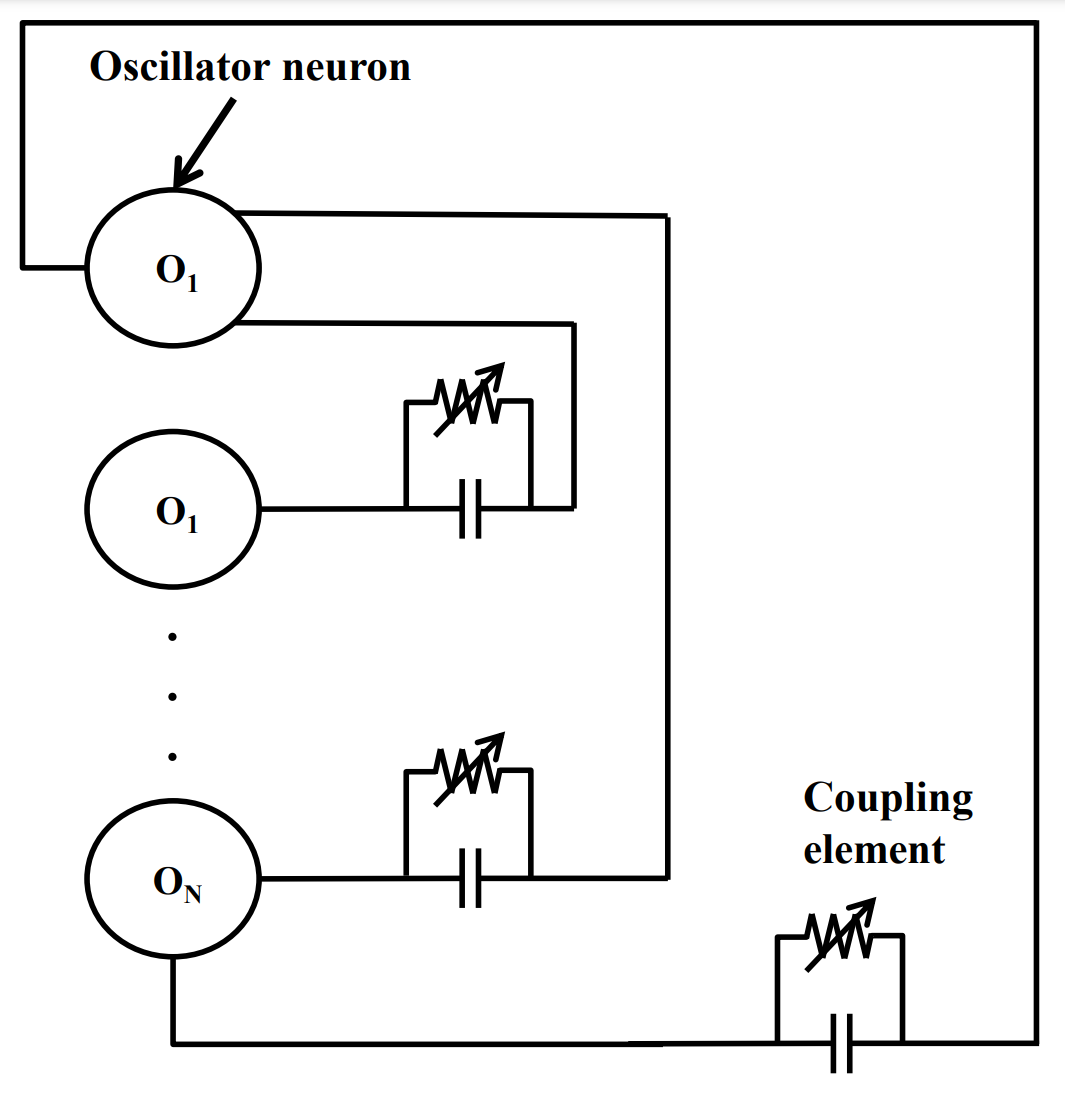The invention presents a neuron oscillator that uses a thermal insulating device in conjunction with a resistor and a capacitor to produce self-sustained oscillations. This design eliminates the need for additional compensation circuitry and simplifies integration with existing systems by operating at low voltages.
Traditional oscillators face issues with consistent performance due to heating and require additional compensation circuitry. They also suffer from complex fabrication processes and integration challenges with existing circuits.
- Thermal Insulating Device: Comprises a silicon substrate, thermally oxidized to grow silicon oxide, with titanium and platinum deposited by sputtering. Includes a thermal insulating layer made of materials such as praseodymium manganese oxide (PMO), praseodymium calcium manganese oxide (PrCaMnO3), calcium manganese oxide (CaMnO3), or lanthanum strontium manganite oxide (LSMO). Operates via transient Joule heating, causing hysteretic thermal runaway.
- Low Voltage Operation: Operates at 2-3V, compatible with existing circuitry without converters. Significant fraction of applied bias used for oscillations, reducing the need for amplification.
- Fabrication Process: Includes steps such as thermal oxidation, sputtering, photolithography, and lift-off processes. Uses materials and processes that enable scalability and integration
- Consistency and Performance: Eliminates the need for compensation circuitry. Improved ON/OFF ratio and broader resistor range.
- Integration and Scalability: Compatible with existing circuitry. Simplifies fabrication and reduces complexity.
The prototype involves a silicon substrate oxidized at 1000°C, with titanium and platinum layers deposited by sputtering, followed by a thermal insulating layer and a tungsten contact. The device is annealed at 750°C and operates based on transient Joule heating to generate self-sustained oscillations.
The fabrication of a neuron oscillator incorporating a thermal insulating device has been successfully demonstrated. Additionally, the dual tunable synaptic functionality of the oscillator neuron has been confirmed. The ongoing efforts include the fabrication of a large-scale oscillatory neural network (ONN) with the neuron oscillator, along with packaging-level functionality and reliability testing.
6
The neuron oscillator can significantly impact various fields by enabling more efficient and powerful artificial intelligence systems, advancing cryptography, and providing low-power solutions for electronics. This can lead to more advanced technologies in healthcare, security, and everyday consumer electronics, contributing to technological and societal progress.
- Electronics: Integration into neuromorphic computing systems. Use in low-power, high-efficiency circuits.
- Artificial Intelligence: Enhances performance in AI applications through improved ONNs.
- Cryptography: Solves NP-hard problems efficiently with coupled oscillatory neural networks.
- Neuromorphic Computing: Use in creating artificial neural networks for AI applications.
- Oscillatory Neural Networks: Application in solving complex computational problems like NP-hard problems.
- Low-Power Electronics: Integration into power-efficient devices and systems.
Geography of IP
Type of IP
201821019896
508013

